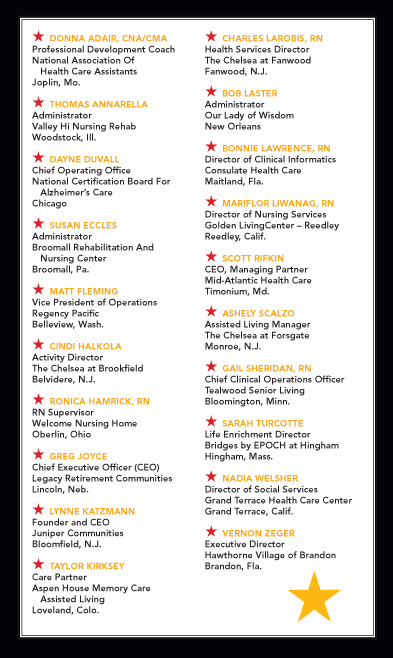

“But the effect of her being on those around her was incalculably diffusive,” George Eliot says of her
heroine in “Middlemarch,” “for the growing good of the world is partly dependent on unhistoric acts, and that things are not so ill with you and me as they might have been is half owing to the number who lived faithfully a hidden life and rest in unvisited tombs.”
Leave aside the melodrama of “unvisited tombs” for a second. Because the people you’ll meet in these pages are, like Eliot’s Dorothea, the “finely touched spirits,” strong as the mightiest river that nonetheless “spent itself in channels which had no great name on the earth.”
We’re proud, here at
Provider, to share our Third Annual “20 To Watch” list, and to give these remarkable people a small bit of recognition. But we’re also conscious of the fact that, no matter how much ink we could spill here, it is nowhere close to the recognition that these stars are owed.
They live
around the country and hold a variety
of jobs. They have taken different routes to this list—some have been working in long term or post-acute care since they were in high school, others have come to the profession as a second career—but they have one thing in common: their dedication to the people in our nation’s skilled nursing, assisted living, and long term care centers. The following pages contain interviews with 10 of the 20 To Watch list for 2015. Read the final 10 in a
Provider feature next month.
Taylor KirkseyCare PartnerAspen House Memory Care Assisted LivingLoveland, Colo.“Taylor,” colleague Jean Cannon tells us, “is amazing. She is enthusiastic about providing exceptional care to the residents in this memory care community—and she is enthusiastic about being sure everyone provides equally exceptional care.”
Kirksey has worked in the profession a scant two years. But her impact is already huge, Cannon says.
Kirksey is already a regular at the Northern Colorado Health Care Association meetings and sits on two association committees (one dedicated to cutting back on needless antipsychotic medicines, the other for the Colorado Center for Assisted Living).
“She lives the person-centered philosophy in all aspects of her job—with residents, with family members, and with co-workers,” Cannon says.
Kirksey came to the profession after winning a scholarship to a junior college so that she could focus on becoming a certified nurse assistant (CNA). While finishing her coursework, she had a job interview at Aspen House “and I absolutely loved it. I’m not exactly sure where I’m going with it,” she says of her career in long term and post-acute care, “but it really calls to me. At the end of the day, it’s the most rewarding thing I can do with my life.”
For Cannon, it’s Kirskey’s commitment to “the little things” that makes all the difference.
For instance, when she saw that some residents weren’t getting their favorite drinks, Kirksey put together a list of each resident’s preferred quaff, which means that everyone at Aspen House can take care of every resident’s coffee break needs.
Another innovation is the one-minute trainings, staff-wide, Kirksey says. Every time a resident’s care plan is changed, everyone on staff—from janitor to administrator—signs off on it, so that the entire building is up to date on each resident’s needs, in real time.
“One of the things I love about the job,” Kirskey tells us, “is coming up with new ideas for person-centered care.”
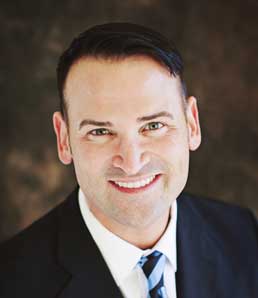
Matt FlemingVice President Of OperationsRegency PacificBellevue, Wash.Matt Fleming’s career in the profession began on the same day that he got his driver’s license.
He grew up on the family’s wheat farm in rural Washington, but the charms of farming life were quickly lost on him. He did have one early passion, though.
“I loved being around elders,” he tells us. “Whenever my mom couldn’t find me, she’d just head to the nearest crowd of little old ladies.”
So how are you going to keep ’em down on the farm after they’ve seen a skilled nursing center?
“Dad said I didn’t have to work the farm, but I had to work,” Fleming recalls. “So as soon as I was 16, I got my driver’s license and drove into town to work at the nursing home.”
He has never regretted the decision, not even for an instant. “When you love what you do, good things happen,” he says.
What impresses co-workers most is that Fleming’s approach is “both innovative and old-fashioned,” says colleague Brenda Orffer. At the same time he is a huge advocate for modernity (helping Regency update its electronic health records system and serving as one of Washington state’s most vocal champions of the Quality Awards), Fleming also never forgets that person-centered care is just another way of saying the Golden Rule.
“He takes the walk-a-mile-in-someone’s-shoes literally and would only ask someone to do something he himself has done or would do,” Orffer says.
Even Fleming’s tradition-minded parents were able to see the benefits of his career. Fleming took care of both of his grandmothers in their last years. “I was the only boy who left the farm,” he says. “But then they came into Spokane, and I was able to offer a private room for my grandmas and they were so safe, so happy, and so loved.”
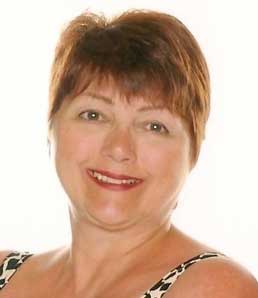
Bonnie Lawrence, RNDirector of Clinical InformaticsConsulate Health CareMaitland, Fla.Bonnie Lawrence came into the profession almost by accident. It may well be one of the happiest accidents of her residents’ lives.
“I’ve been a nurse for—well, we don’t even want to talk about how many years—and, like a lot of nurses, spent my time in the hospital. But then I went to a job fair and saw a presentation on long term care and fell in love with it,” she says.
The difference between the jobs is nothing short of miraculous, Lawrence tells us.
“You have an impact on people’s lives in the hospital, but you don’t always get to see it. Your residents, though—sometimes you’re the only family they have. The elderly have so much to offer,” she says.
People sometimes claim that there’s a conflict between the heart and the head, but Lawrence’s career is proof that such people are making a distinction without much of a difference. Lawrence is co-founder of a Florida chapter of the American Nursing Informatics Association and says that, for all her concerns about leaving her residents for spreadsheets, she’s seeing a huge difference in people’s lives.
“It was hard—it was very hard—when I made the transition,” she tells Provider. “It was hard because I didn’t have the day-to-day contact with the residents that I used to have. But as I have been in it longer, I’m really seeing that what I’m doing and what the team is doing is having a terrific impact on our residents. With the data, we’re able to pick up on things that we might have missed in a paper system.”
The Informatics Association chapter she founded is also forward-looking.
“Most of the chapters are hospital-driven,” Lawrence says.
“We’ve got hospitals, too, but we’re intentionally looking at the continuum of care. We’ve got hospice, we’ve got home care, and we’ve got skilled nursing.”
Lawrence isn’t just advocating for her own centers, though. She has lobbied state and federal officials to support the digital revolution in the profession, as well as lobbied to reduce the harmful effects of litigation, colleague Jennifer Murray says.
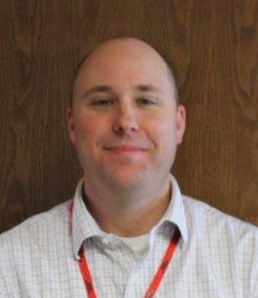
Thomas AnnarellaAdministratorValley Hi Nursing RehabWoodstock, Ill.Thomas Annarella has only been working in the profession since 2000, but he already considers himself a lifer.
“I love what I do,” he says.
He was pursuing a degree in health care administration and interned at a long term care center. Slowly, imperceptibly, “I started to realize I liked the long term care arena.” He hasn’t left.
For Annarella, the difference between a career in long term and post-acute care or anything else in health care was “the relationships that you have with your residents.”
“They come and they stay. It’s not get ’em in, move ’em out. That’s the one thing that appealed to me the most. You’re caring for a person who eventually becomes family to you,” Annarella says.
“They’re only strangers on the first day,” he adds.
It’s not just the residents who benefit from Annarella’s leadership, though. Dave Voepel, executive director of the Illinois Health Care Association, says Annarella’s CNA Team Leader program is a game changer.
“The team leaders assist with routine assignments and tasks for the CNA team, manage the dining program, and are available to assist with daily care or provide resident-centered attention. The team leaders participated in the development of the program to enhance buy in and to make it easily implemented into the daily routine,” Voepel says.
Under the Team Leader program, a CNA team leader is designated for each shift and each floor, Annarella says.
“You’re coordinating breaks, you’re coordinating care, and you’re kind of a liaison with the nurses,” he says.
“You’re actively engaging staff that wouldn’t ordinarily have that opportunity, and you’re allowing them to offer the kind of communication that you wouldn’t otherwise get,” he says.
“Where we see the impact is in the resident surveys. We see it in the dining rooms. They take the lead in the daily routine.”
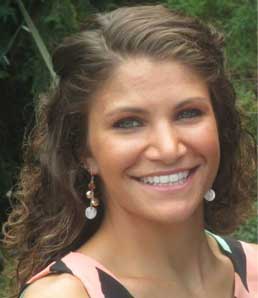
Ashley ScalzoAssisted Living ManagerThe Chelsea at ForsgateMonroe, N.J.Ashley Scalzo is another who came to long term/post-acute care as a second career professional.
A psychology and communications major at Rutgers University, Newark, N.J., Scalzo was working in the marketing department of radio stations when she decided she needed a change.
“I was there for a few years, and I realized I wanted to do something a little more hands-on,” Scalzo says.
“At the same time, my grandfather developed Alzheimer’s. And I realized there was so much I didn’t know. I just kind of came across an article about part-time activities in long term care.”
Intrigued, Scalzo took a part-time job as a recreation assistant at another Chelsea building.
“It was evident immediately that she was fantastic with the residents, easy to approach, and a fast learner,” co-worker Tom Kranz says of Scalzo.
Over the past two years, Scalzo has quickly worked her way up the ladder (including a two-year stint at the Chelsea at Bridgewater, where her grandmother lives). She’s now an executive-director-in-training.
“I think you are a voice for those who need an advocate,” Scalzo says. “That is definitely one of my passions. It’s a population that we really need to see the value of. I feel that there is this treasure that just needs a little help to express their value.”
She may still be learning, but Scalzo says she also likes to think she’s accrued some early wisdom.
“One thing a resident said to me, ‘You can make all the money you want in the world, but remember, it’s all about people. Because when you get to heaven, you can’t take your money with you,’” she says.
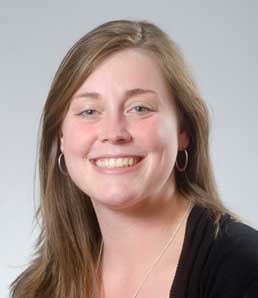
Sarah TurcotteLife Enrichment DirectorBridges by EPOCH at HinghamHingham, Mass.Sarah Turcotte began her career in high school, working as a housekeeper on the floor of a memory unit. “I ended up spending more time with the residents than with the housekeeping,” she says, laughing.
Thirteen years later, Turcotte is still spending as much time as possible with the residents.
“I really enjoy getting to know each person and really focus on their remaining abilities and helping them to break down the programs,” she says. “I like to bring those past likes and interests into their lives after they’ve been taken from the residents.”
What makes the difference, Bridges colleague Melissa Brooks says, is Turcotte’s willingness to meet the residents where they are. Many residents, for instance, are in their 50s or 60s, suffering from early onset dementia. The playbook approach to dementia care—trivia contests or sing-alongs—clearly won’t answer, Brooks says.
“So Sarah plans jogging groups, trips to local museums, Cape Cod Canal cruises, photography clubs, volunteer work at local animal shelters and soup kitchens, and so much more,” Brooks says of Turcotte.
“The volunteer programs, in particular, provide residents with a renewed sense of self-worth because they garner a sense of accomplishment and purpose from helping others and giving back to their community.”
Turcotte says she’s proud of the community service projects. “I once heard a resident interviewed on television,” she tells us. “She said, ‘As long as I’m standing on my own two feet, I want to be of some use.’”
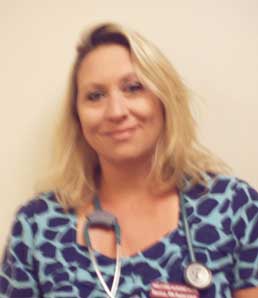
Ronica Hamrick, RNRN SupervisorWelcome Nursing HomeOberlin, OhioRonica Hamrick’s career might be another example of unintended consequences. She applied to work at Welcome Nursing in 2001, because, Hamrick says, her cousin worked there and she needed a job.
Welcome Nursing is thrilled to have her, says Robin Hillier, a board member of the American Health Care Association.
“Her compassion for the residents was evident, and when we offered the State Tested Nursing Assistant class, she was the first in line,” Hillier says.
“Ronica was a stellar STNA, running circles around her co-workers, encouraging them to pay attention to details. Her residents always had on their jewelry and makeup. They never left their rooms with a hair out of place,” Hillier says.
Meanwhile, Hamrick was working her way to a registered nurse’s degree and license—oh, and raising two small kids. “She’s not only a leader, but a role model,” Hillier says of Hamrick, “and, more importantly, she’s an inspiration to those who have the desire to do more.”
Hamrick is a bit more laconic (she is, after all, a Midwesterner). “It’s been a long haul, but I wouldn’t have changed it a bit,” she says.
So, what’s her proudest moment?
“That’s a really hard question for me to answer,” Hamrick says. “Every day is such an honor.”
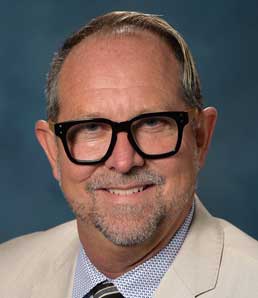
Dayne DuVallChief Operating OfficerNational Certification Board for Alzheimer CareChicagoDayne DuVall’s resume might be the most eclectic of this year’s list. He’s served as an editorial assistant at a New York fashion magazine, an interior designer, and a massage therapist. If it seems like he’s often in motion, that’s a false impression. DuVall is always in motion.
“He attends all the important national and regional conferences, where he spends as much time as he can in education sessions to learn about the business,” says Jack York, a tech executive and friend of DuVall’s.
“His outgoing personality (and fashion sense) makes it easy for him to meet important leaders to form relationships that would take other people years to develop.”
DuVall’s father died of Alzheimer’s, but he says he can’t claim that it’s anything more than “the universe just happened to line up” that brought him into the job that he considers the summation of his life’s work.
DuVall was working for an association specializing in certification and training for fellow massage therapists. His founder, though, needed someone to run a similar association dedicated to training those who cared for people with dementia.
“And I said, ‘Are you kidding? This is what I was made for,’” DuVall recalls. “Because it brings together all my entrepreneurial drive and my desire to build teams and to get the word out. My personal mission in life is to make sure that everyone who is touched by Alzheimer’s disease gets the proper care.
“And the only way they can get the care they need, is to get the right training,” DuVall says.
Bob LasterAdministratorOur Lady of WisdomNew OrleansThe men and women you’ve met in these pages are all, in their way, stars. But only one of them can take credit for having hired an Academy Award-winning star.
Bob Laster was running a home in Arkansas in the late 1970s and early 1980s. His activities director left, and a young maintenance man asked to be considered for the role.
“He had hair down to his shoulders, played in a rock band on the weekend. I told him, ‘Let me think about it,’” Laster recalled.
And Laster did think about it, and he saw how much the residents adored the young, unkempt youngster. Laster decided to roll the dice and give him the activities director’s job. A short while later, Laster got a job in New Orleans, and the young man moved to Houston to pursue his music and, later, a film career.
Years later, Laster and his family would attend a Billy Bob Thornton concert at The House of Blues in New Orleans. Laster handed his card up to a stage hand, who gave it to the “Sling Blade” star.
“He said, ‘Oh, my God. Where are you, Bob?’” Laster recalled. “And I raised my hand and the spotlight came up on me.”
Thornton turned to his audience. “Y’all won’t believe this,” Laster quotes him as saying, “but Bob and I worked at a nursing home together. And everybody laughs, and he goes, ‘No, I’m serious.’”
Despite his brush with Hollywood greatness, Laster remains a salt-of-the-earth type. He got into the profession more or less by accident—he answered an ad a couple of years after graduating from college, and when, a month after taking his administrator’s exam, he was offered four different jobs, he figured, “Well, maybe there’s something to this.”
Over the past six years, Our Lady of Wisdom has had deficiency-free surveys, and its census is 136 out of 138, “and you can’t knock that,” Laster says.
Laster has been in the profession since 1977, and he says it’s been thrilling to watch the care revolution overtake long term and post-acute care. But he says he learned one of his most important lessons early.
His first job was at a home in rural Louisiana “that was having a lot of trouble. And a year later, it was doing great.”
But it had the same supervisory core, he says. “It underscores the importance of teamwork. I don’t have a magic wand. It takes work and planning and people working together to get things accomplished.”
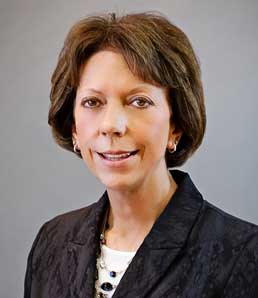
Gail Sheridan, RNChief Clinical Operations OfficerTealwood Senior LivingBloomington, Minn. Gail Sheridan literally grew up in nursing homes. “I was blessed with really great parents, and we were always going to homes, visiting people,” she recalls.
Her first job, as a teenager, was in the dietary department of a local care center. It lasted a week. “I decided I was better at people than food,” she recalls.
A hitch in the Navy—where she earned her RN while stationed in San Diego—interrupted her career, “but I knew, from the beginning, that I was supposed to be in long term care,” Sheridan says.
She joined Tealwood in 1989. Today, she serves more than 45 skilled nursing and assisted living centers in four states in the Midwest. She’s chair of the board of directors for Care Providers of Minnesota and sits on the survey/regulatory and the emergency preparedness committees for the American Health Care Association.
It’s not her only duty. In fact, it’s an open question of whether there’s anything she doesn’t do. At Tealwood, she runs the clinical care systems, its quality improvement, its regulatory compliance, and its human resources divisions. She shares responsibility for the company’s workers’ compensation loss control services and risk management programs.
“I think it’s in my blood,” Sheridan says. “Everyone knows where their heart is, and where their mission is. Mine’s in long term care.
“Finding good people that are committed to the same mission that you have is not always easy. But, boy, I’ll tell you, we’ve got it here at Tealwood.”
As committed as Sheridan is to quality of life, she also understands that part of her job is to improve the quality of death for her residents. She recalls an incident several years ago when one of her residents was dying but a relative was “not ready to let go.”
Sheridan spent every available second with the dying resident and her family, offering as much support as she could—everything from casual chats to hugs.
“To be with them, to comfort them, and to have them come back, years later, and say, ‘You really helped me through a rough time, thank you,’ it just means the world,” Sheridan says.
“It’s been a long journey,” Sheridan says of her career. “Boy, I look back and—like I’ve said—I’ve been blessed, and I wouldn’t change a thing.”